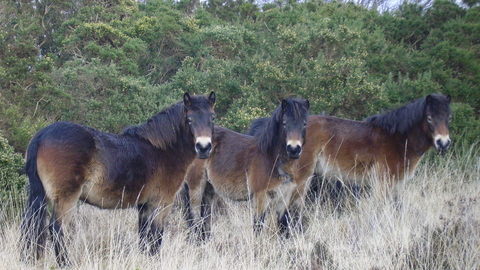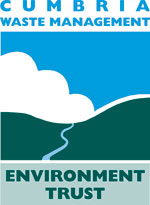
Drumbrugh Moss Nature Reserve © Cumbria Wildlife Trust


Short eared owl © Amy Lewis

Round-leaved sundew Drosera rotundifolia, close-up growing in sphagnum moss, Flow Country, Scotland, June - Mark Hamblin/2020VISION
Sphagnum moss, sundew and other bog-loving plants thrive in the wetlands that make up much of the terrain. Curlew and red grouse breed and adders and roe deer are seen.
Location
OS Map Reference
OS 1:50,000. Sheet no. 85Grid reference: NY 255 586
Getting here
By car:
Drumburgh Moss is located immediately south of Drumburgh village. On entering the village from the Carlisle direction take the first left, which has a brown sign for Drumburgh Moss. Follow the track for about 600m, cross over the cattle grid and find the parking area on the right after about 350m, opposite a small wooden interpretation shelter.
Please ensure your vehicle does not obstruct access as the track is in constant use.
By bicycle:
The reserve is on National Route 72 Hadrian's Cycleway.
By public transport:
Buses run from Carlisle to Bowness-on-Solway and Anthorn.
View on What3Words
Know before you go
Dogs
When to visit
Opening times
Open all year roundBest time to visit
April to AugustAbout the reserve
Wildlife highlights
Take a walk to our new bird hide and viewing platform for fantastic views across the mire to the hills beyond.
This nature reserve is a fantastic place to see birds all year round, including birds of prey; invertebrates, including many species of dragonfly and butterfly, and much more.
-
Spring - Birds displaying and cotton grasses flowering across the mire. Bog plants such as bog rosemary, heather and cranberry are at their best. You might be treated to breeding displays of curlew, skylark and reed buntings. Red grouse, redshank, snipe and grasshopper warbler also breed here. Reptiles and amphibians emerging from their hibernation. The arrival of migratory birds such as cuckoos.
- Summer - the nationally rare large heath butterfly is on the wing from June to August looking for cotton grass on which it lays its eggs. This is the time to find adders and common lizards basking. Cranberry, bog rosemary and later heather are in flower. You can find all three species of sundew here including the scarce great sundew. Sundews have adapted to low nutrients of the bog by trapping and digesting flies on sticky filaments on their leaves. The pools near the nature reserve entrance are alive with dragonflies and damselflies during the summer months.
- Autumn - Also look out for short-eared owls hunting over the moss. Also, a good time to see the elusive hobby and other birds of prey including peregrine falcons. Still plenty of dragonflies about too, with very impressive numbers of black darters.
- Winter - Drumburgh Moss nature reserve often hosts small numbers of geese from the huge flocks on the Solway. Other wildfowl include teal and sometimes flocks of black-headed gulls. Hen harriers can sometimes be seen roosting.
A threatened habitat
Raised mires were formed following the last ice age when dead vegetation gradually in-filled a body of standing water forming peat, which eventually became raised up above the surrounding land.
In recent years much of this habitat has been lost or damaged, making it one of western Europe’s most threatened habitats.
How the moss is formed
Being raised, the bog surface gets all its moisture from rain water which is lacking in nutrients. The bog vegetation is largely made up of Sphagnum moss, of which 13 species have been recorded on the nature reserve. Sphagnum moss, is highly absorbent, and can hold large amounts of water acting like a giant sponge.
Sphagnum moss is not the only bog plant to be found. Drumburgh Moss nature reserve is home to a number of specialist bog plants. In spring, the moss is a profusion of the white heads of cotton grass, dancing in the wind.
Working to restore the moss
Past drainage and peat cutting of the moss and surrounding farmland has meant that Drumburgh Moss is much drier than it should be.
The Trust has carried out extensive restoration works: blocking ditches, reprofiling peat faces and removal of trees and scrub all help to raise the water level so that the bog vegetation can start to regrow.
Keeping it special
Around the moss are areas of wet and dry heath, scrub and grassland which are managed by grazing. We use native breed cattle and hardy Exmoor ponies to keep the vegetation open.
Drumburgh Moss is designated as a Site of Special Scientific Interest and is part of the South Solway Mosses Special Area of Conservation.
The main nature reserve was purchased by Cumbria Wildlife Trust in 1981, however various extensions have been purchased since then.
Species
- Short-eared owl
- Round-leaved sundew
- Large red damselfly
- Snipe
- Reed bunting
- Grasshopper warbler
- Sedge warbler
- Common lizard
- Emperor moth
- Adder
- Black darter
- Emperor dragonfly
- Common Hawker
- Curlew
- Red grouse
- Roe deer
- Heather
- Skylark
- Redshank
- Snipe
- Cuckoo
- Large heath
- Common cotton-grass
- Hobby
- Peregrine falcon
- Teal
- Black-headed gull
- Hen harrier
- Sphagnum moss
Habitat
Contact us
Environmental designation
Donate to lock away carbon & reduce climate change
Take a virtual tour of Drumburgh National Nature Reserve
Did you know?
Although short-eared owls can be spotted all year, they are regularly seen in the autumn and winter, when they are joined by birds escaping harsher weather conditions in Scandinavia, Iceland annd Russia.
Upcoming events at Drumburgh Moss Nature Reserve
If there are any upcoming events at Drumburgh Moss Nature Reserve we'll show them to you below.

Support our conservation work on this nature reserve,
and protect Cumbria's wildlife & wild places.
Further information about Drumburgh Moss Nature Reserve
Thanks to our funder Cumbria Waste Management Environment Trust.

Dying of the Light - a short film about Drumburgh Moss Nature Reserve, Cumbria


